
Production of potato in Ukraine in the first half of 2021 decreased by 19.8% compared to the first half of 2020, to 240,800 tonnes, and of vegetables – by 4.8%, to 684,700 tonnes, according to the website of the State Statistics Service.
The State Statistics Service said that as of July 1, potatoes were harvested from a total area of 17,900 hectares, which is 22.2% less than on July 1, 2020. The average potato yield increased by 9.7%, to 141.8 centners per hectare. The leaders in potato production were Kherson region, which harvested 79,800 tonnes (less by 36.1% compared to January-June 2020), Zhytomyr region – 46,500 tonnes (less by 0.8%) and Vinnytsia region – 39,800 tonnes (less by 2.9%).
In addition, it is reported that the total production of vegetables in Ukraine in the first half of 2021 decreased by 4.8% compared to the first half of 2020, to 684,700 tonnes. At the same time, production of open field vegetables remained at the level of January-June 2020 – 386,900 tonnes.
The yield of open field vegetables in the first half of the year increased by 4.6%, to 183.6 centners per hectare. As of July 1, 2021, crop data were collected from 21,900 hectares, which is 1.4 less than on July 1, 2020. The leaders in the cultivation of open field vegetables during this period were Kherson region, which harvested 234,500 tonnes of this crop (an increase of 2.3 times compared to January-June 2020), Lviv region – 312,400 tonnes (more by 24.8%) and Dnipropetrovsk region – 19,500 tonnes (more by 58.9%).
According to the State Statistics Service, the production of fruit and berries in January-June 2021 decreased by 7.2% compared to January-June 2020, to 182,100 tonnes. The leaders in their cultivation were Dnipropetrovsk region, which harvested 21,400 tonnes of fruit and berries (less by 6.1% versus January-June 2020), Donetsk region – 21,100 tonnes (more by 54.3%) and Zaporizhia region – 17,500 tonnes (more by 86.8%).
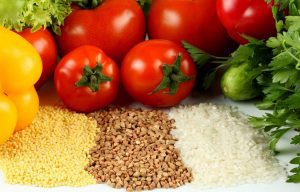
The Cabinet of Ministers proposes to the Verkhovna Rada to adopt the bill “On Amending the Customs Tariff of Ukraine regarding the temporary application of import duty rates on certain types of grain crops.”
Relevant bill No. 3310 was registered in parliament on April 7, 2020.
The text of the bill is not yet available on the Rada’s website. However, an informed source on the market, explained in a comment to Interfax-Ukraine that it was about canceling duties on the import of vegetables and cereals before July 1.
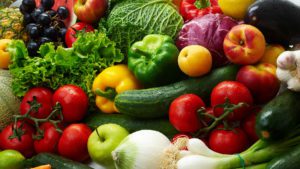
The export of vegetables, fruits, berries and nuts, fresh, frozen and dried brought Ukraine $339 million in revenue last year, which is 9.4% more than in 2018, and 20.1% more than in 2017. According to a Tuesday report on the website of the Ukrainian Horticultural Association, walnuts, berries and apples were the main product groups providing growth in the export of fruits and vegetables. The growth in revenue from apple exports over two years exceeded 150%, while exports of nuts and frozen berries grew by about 37% in two years.
At the same time, according to the association, the share of these three leading categories of the total export of fruits and vegetables continued to grow and reached 70% in 2019.
“The growth rate of export of fruits and vegetables from Ukraine remains high, but whether the country can keep them in 2020 is a big question, because there have been a number of negative trends, such as a strengthening of the national currency, a shortage of labor for harvesting products, a decrease in raspberry production, decrease in investments in new orchards and berry plants, and other things. At the same time, there is great hope that Ukraine will continue growing for some time thanks to the fruiting of orchards, nuts and berries laid over the past five years,” Economist at the investment department of the Food and Agriculture Organization of the United Nations (FAO) Andriy Yarmak said.
According to the association, Ukraine is not even among the top 50 world leaders in terms of fruit and vegetable exports.
“For example, Lithuania, with a climate not favorable for fruits and vegetables, exports more fruits and vegetables than the entire Ukraine. Poland exports $2.6 billion worth fruits and vegetables – eight times more than Ukraine. Moreover, this includes re-export of Ukrainian berries, and other products of the fruit and vegetable group,” the association said.
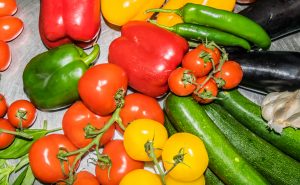
Adult Ukrainians consume almost half the amount of vegetables (174 grams versus the recommended 300 grams per day) and less than 30% of fruits and berries (83 grams versus 300 grams per day) compared with the recommendations for healthy eating for adults.
The relevant data are contained in the national study of the current nutritional structure of Ukrainians, which was conducted by the Ipsos international research company at the initiative of Danone in Ukraine.
The results of the study of food consumption in 2018-2019 showed that adults consume an excessive amount of flour products – 474 grams per day, at the same time, the level of consumption of dairy products is several times lower than recommended, as well as liquid (500 ml per day). Ukrainians consume extremely few legumes – 9 grams against the recommended 75 grams and only a quarter of the recommended amount of nuts and seeds – 8 grams against 30 grams.
According to the study, Ukrainians consume twice the recommended amount of salt – 9.7 grams compared to the recommended 5 grams of the World Health Organization (WHO). Men consume 17% more salt than women – 10.7 grams versus 8.9 grams.
The average adult sugar intake is 46 grams per day. Only about a quarter of the adult population adheres to recommendations for optimal sugar intake – less than 25 grams per day (25% of men and 23% of women). Some 40% of Ukrainians consume from 25 grams to 50 grams of sugar per day. A high level of sugar consumption – more than 50 grams per day is found for more than a third of the population (35%), of which 12% consume more than 75 grams of sugar per day.
The study involved 1,232 people aged 1 to 60 years. The examination of the study was provided by the Association of Dietitians of Ukraine.
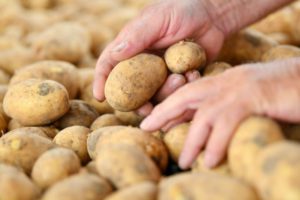
Imports of vegetables to Ukraine have significantly exceeded the figure of the previous record, which had been held for nine years, and in the 2018/2019 season (August-July) exceeded the previous record immediately by 27% and reached 264,100 tonnes.
According to the EastFruit information and analytical platform, in the 2009/2010 season, the import of vegetables to the country over the season exceeded 200,000 tonnes for the first time and amounted to 208,500 tonnes. Since then, the volume of imports of vegetables has not even approached the mark of 200,000 tonnes, but last season it exceeded the previous record by 27% at once.
“In 2018/2019, import volumes exceeded the previous season’s figure in natural terms by more than two times. Over the past two seasons, import volumes have more than tripled. In value terms, growth rates were slightly lower due to an increase in the volume of traditional inexpensive vegetables and potato in the import structure. In general, foreign suppliers of vegetables and potato earned $155 million in Ukraine over the season,” EastFruit noted.
According to the platform, the main items of vegetable imports to Ukraine in terms of value were tomatoes, onion, pepper, and cucumbers. In fact, Ukraine increased its imports of almost all positions of vegetables and potato, including salad crops and greens.
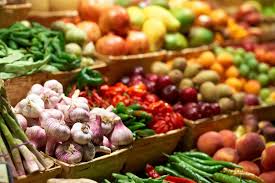
The profitability of grain production in Ukraine in 2017 was 25% compared to 37.8% in 2016, the State Statistics Service has reported. According to its data, in addition, last year the profitability of production of sunflower seeds decreased to 41.3% from 63% in 2016, sugar beets to 12.4% from 24.3%, open ground vegetables to 15.6% from 19.7%, while potatoes grew to 10% (minus 3.2%).
At the same time, for the first time since 1995, production of meat became profitable: 3.4% against 24.8% in 2016. Profitability of pork production was 3.5% against minus 4.5%, poultry some 7% against 5% in 2016.
The profitability of mutton production last year declined and amounted to minus 39.6% against minus 35.2% in 2016, eggs accounted for minus 9% against 0.5% in 2016.
According to the agency, the profitability of milk production in 2017 increased to 26.9% from 18.2%.